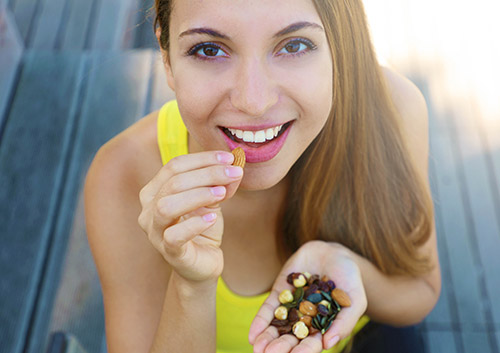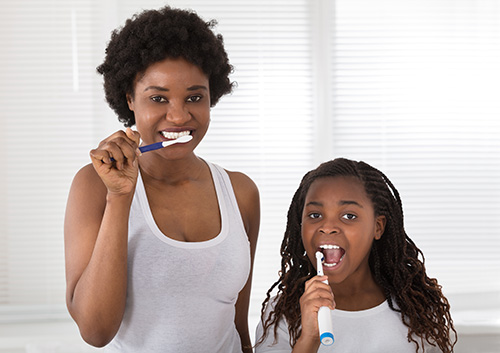How to Subtract Those Added Sugars
September 6th, 2023

Sugars are the simplest carbohydrates, and are found naturally in fruits, vegetables, grains, and dairy products. Our bodies require these simple carbs for energy. (Even better, we don’t just get energy from fruits, vegetables, grains, and dairy—we also get healthy amounts of vitamins, minerals, antioxidants, fiber, and even some protein!)
Problems arise when we get too much of this good thing. Once our bodies have all the sugar they need for immediate energy, they store extra sugars in liver, muscle, and fat cells. Over time, excess dietary sugars can affect weight and blood sugar levels, with potentially damaging results.
And, of course, sugar has an immediate effect on our oral health. The oral bacteria in plaque also need sugars for energy, which they use to make acids. An acidic environment in the mouth dissolves the minerals, which keep our tooth enamel strong. And these weak spots are vulnerable to decay. A steady diet of sugar-filled foods means that your enamel is constantly under acid attack.
So it’s really no wonder we hear a lot about avoiding “added sugars” in our diets, for both our general health and for our dental health in particular. But the concept of “added sugar” can be a bit misleading. If you’re not putting five spoons of sugar on your breakfast cereal, or pouring half a jar of honey in your tea, or using a recipe that calls for a cup of corn syrup, you might think you’re avoiding added sugars altogether. And that’s just not the case.
When dieticians talk about added sugars in our foods, they mean additional refined sugars (like white and brown sugars and corn syrup) that are used in preparing or processing foods.
Unlike unprocessed foods, which have been minimally treated to keep them as natural as possible, processed foods have been baked, or frozen, or mixed with other foods, or somehow changed from their natural state. This is where “added sugars” come in. Both home cooks and commercial processors use sugar to improve flavor, provide sweetness, and extend shelf life when preparing food.
What are some of the worst offenders? Store bought or homemade desserts like cakes and ice cream are prime candidates. Sodas? Most definitely. But it’s not just the obvious culprits. Added sugars are found in many foods we usually think of as healthy, including:
- Smoothies
- Fruit Drinks
- Energy Drinks
- Granola Bar
- Power Bars
- Breakfast Cereal
- Flavored Yogurt
While eating unprocessed foods is one way to make sure you get no added sugars, you can also eliminate many grams of sugar from your daily diet by trying out low-sugar recipes and choosing processed foods with little or no added sugar.
How to avoid unexpected added sugars? Fortunately, new labelling on food packages lets us know not only how much sugar is in any product, but how much added sugar has found its way into our grocery cart. Take a moment to check out labels, and avoid sugary surprises.
Your body can get all the natural sugar and carbs it needs for energy from a healthy, well-balanced diet. Lowering your added sugar intake won’t deprive your body of necessary nutrients, but it will deprive oral bacteria of their most convenient food source and reduce the amount of acids, which threaten your enamel. In fact, subtracting extra sugars is one of the easiest and most effective ways to add to your dental health!
If you have any questions about reducing your sugar intake, be sure to ask Dr. James Robson the next time you visit our East Lyme, CT office.



